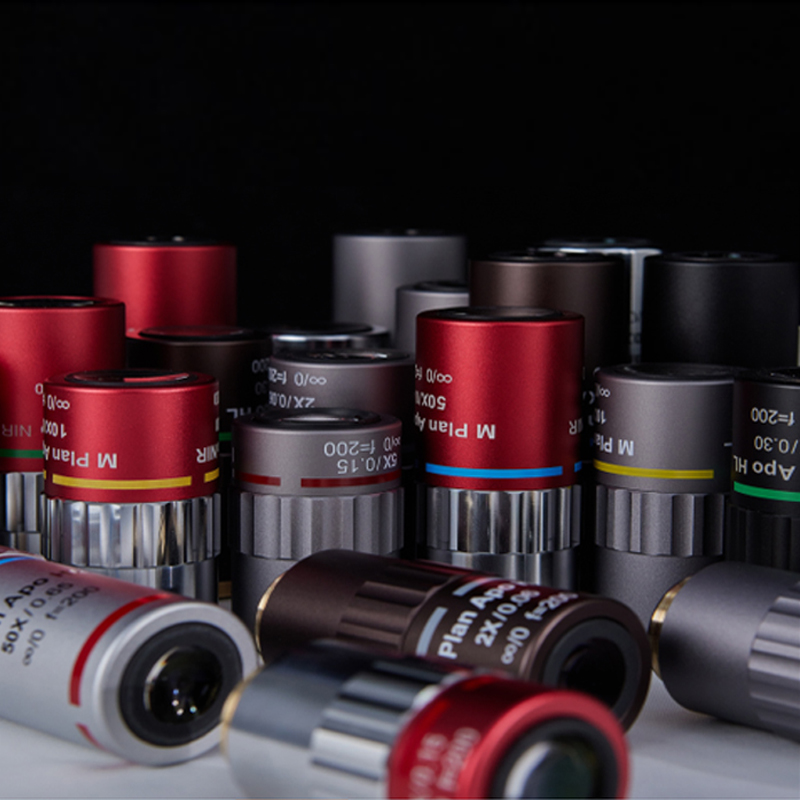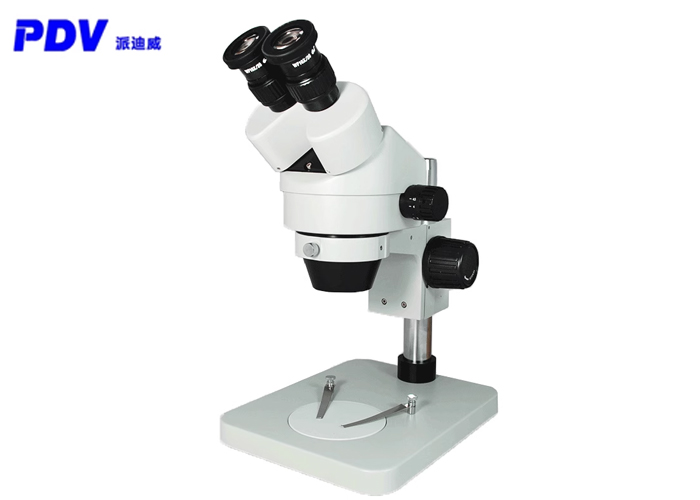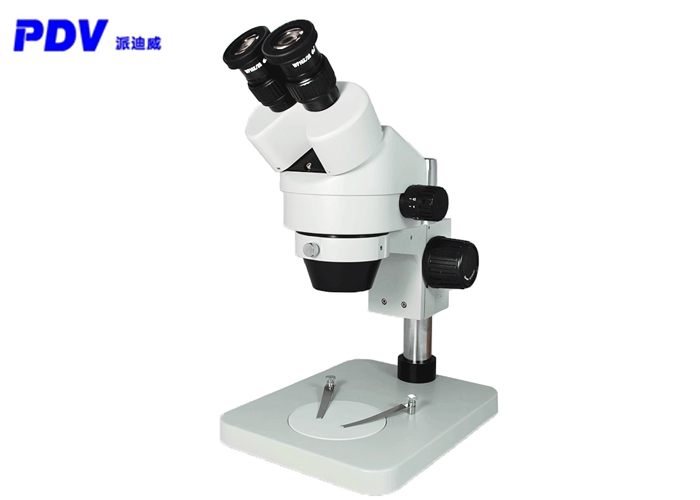Working distance and field of view of microscope objective:
The working distance of the objective lens refers to the distance between the sample surface and the front end of the objective lens after the microscope is accurately focused.
The higher the magnification of the objective lens, the shorter the working distance! Therefore, it is necessary to be extra careful when observing the focusing, and generally, the objective lens should run in the direction away from the object.
The field of view refers to the size of the surface area of the sample observed in the microscope. The field of view is inversely proportional to the magnification of the objective lens. Generally, the diameter of the first magnified real image of an ordinary objective lens is 18mm, and the diameters of the field of view of an objective lens with magnification of 10x, 40x and 100x are 1.8 mm, 0.45mm and 0.18mm respectively. The diameter of the first enlarged real image of the head-up field objective lens can reach 28mm, and the market scope is greatly increased.
Basic types of objective lens:
According to the different degrees of aberration correction, objective lenses are generally divided into achromatic objective lenses, apochromatic objective lenses and flat-field objective lenses.
achromatic objective
The correction of spherical aberration by achromatic objective lens is limited to yellow and green light, and only red and green light are corrected for chromatic aberration. Therefore, the achromatic objective still has residual chromatic aberration, and the image domain curvature still exists. When using achromatic objective lens, yellow-green light or yellow-green color filter can reduce aberration.
Apochromatic objective lens
Apochromatic objective lens is a high quality objective lens, which can correct the chromatic aberration in three wave regions (actually equal to the whole visible light range). Spherical aberration correction can reach the range of green and purple light, but it has no fundamental improvement on image domain bending. This kind of objective lens has no restrictions on the light source, and generally has a large numerical aperture and high imaging quality, which is suitable for high-magnification observation.
Horizontal field objective lens
The above two kinds of objective lenses are classified according to the correction degree of spherical aberration and chromatic aberration. The horizontal field objective lens is based on the breadth of field of view plane correction. The head-up field objective lens can correct the curvature of the image field well. The flat-field objective lens can be divided into flat-field achromatic objective lens and apochromatic objective lens, and the correction of spherical aberration and chromatic aberration is the same as that of achromatic objective lens and apochromatic objective lens respectively. The characteristic of this kind of objective lens is that it significantly expands the flat range of the image field, making the whole field of view clearer, suitable for observation and more conducive to photography.

diaphragm
There are two diaphragms in the illumination system of metallographic microscope, namely aperture diaphragm and field diaphragm.
Aperture diaphragm
Aperture diaphragm is used to control the thickness of incident light beam, and its position is close to the light source. Generally, the aperture diaphragm of a microscope can be continuously adjusted. When the aperture diaphragm is reduced, the beam entering the objective lens becomes thinner, and the light does not pass through the edge of the objective lens group, so the spherical aberration is greatly reduced. However, the beam thinning will reduce the aperture angle of Wu Jingdi, which will reduce the actual numerical aperture and resolution. When the aperture diaphragm is enlarged, the incident beam becomes thicker and the aperture angle of the objective lens increases, which can make the light fill the rear lens of the objective lens. At this time, the numerical aperture can reach the rated value and the resolution is improved. However, due to the increase of spherical aberration and the increase of internal reflection and glare in the lens barrel, the imaging quality will be reduced. Therefore, the aperture diaphragm has a great influence on the imaging quality, and it must be properly adjusted when it is used. It should not be too large or too small, and its appropriate degree should be based on the lens after the light beam fills the objective lens, and judged according to the clarity of the imaging. After replacing the objective lens, the aperture stop must be adjusted properly. But it is not used to adjust the brightness of the field of view.
Field of view diaphragm
Generally, a microscope has a field of view besides the aperture stop. Relative to the light source, its position is behind the aperture stop. Adjusting the field diaphragm can change the size of the microscope field of view without affecting the resolution of the objective lens. Proper adjustment of the field diaphragm can also reduce the reflection and glare in the lens barrel and improve the contrast and quality of imaging. However, it should be noted that if the field diaphragm is too small, the observation range will be too narrow, and it should generally be adjusted to the same size as the eyepiece field.













